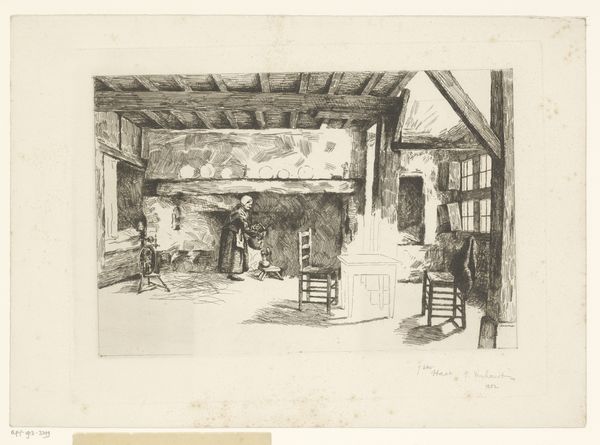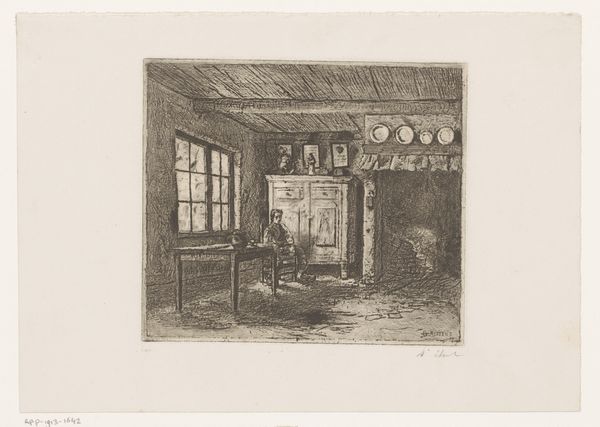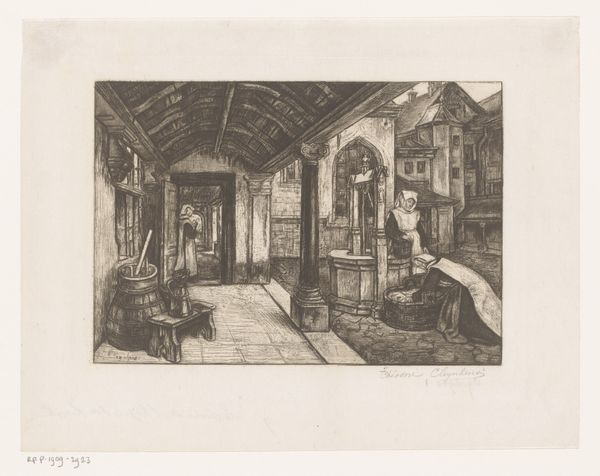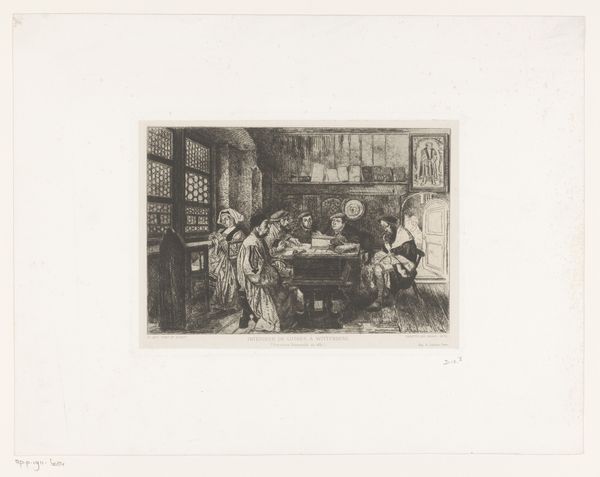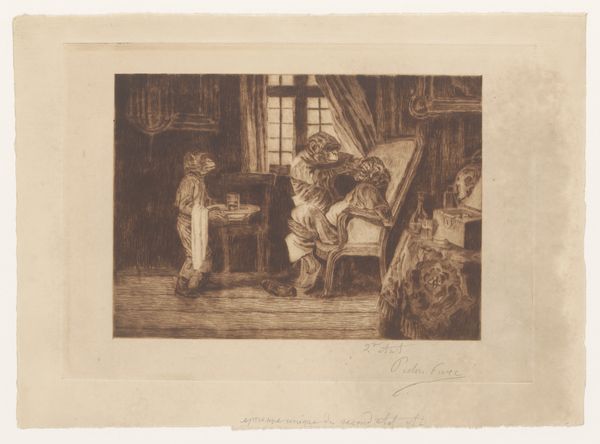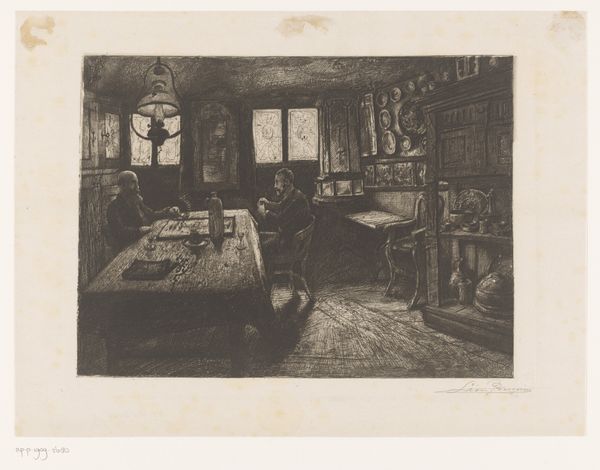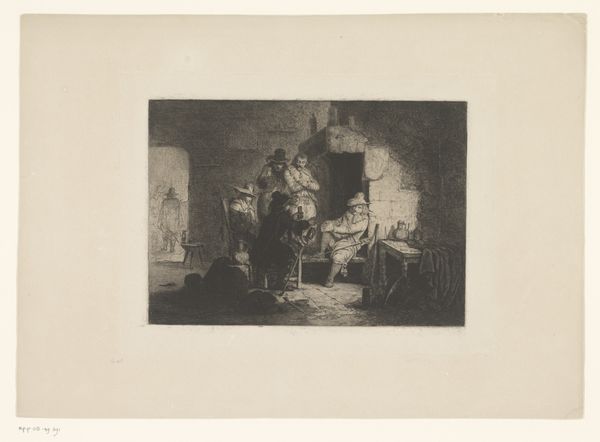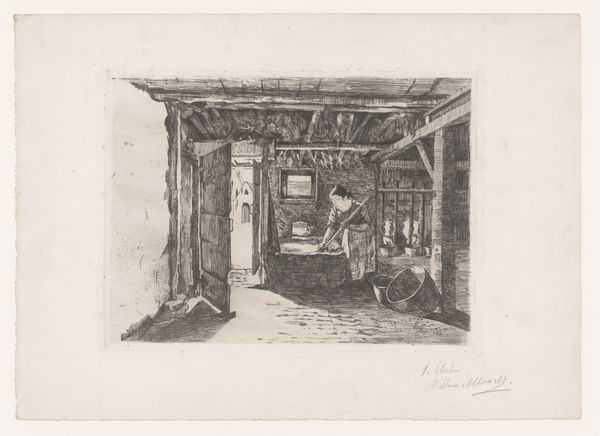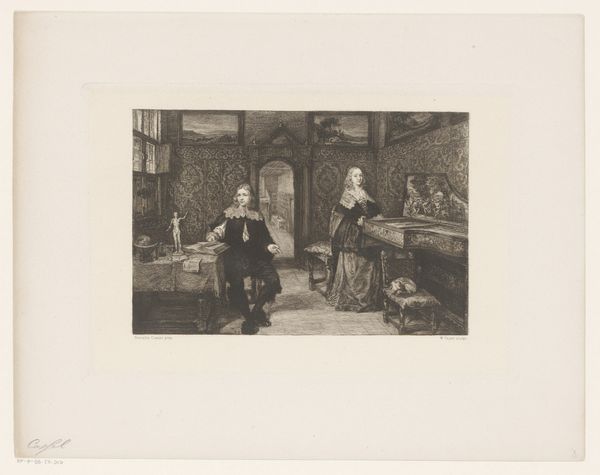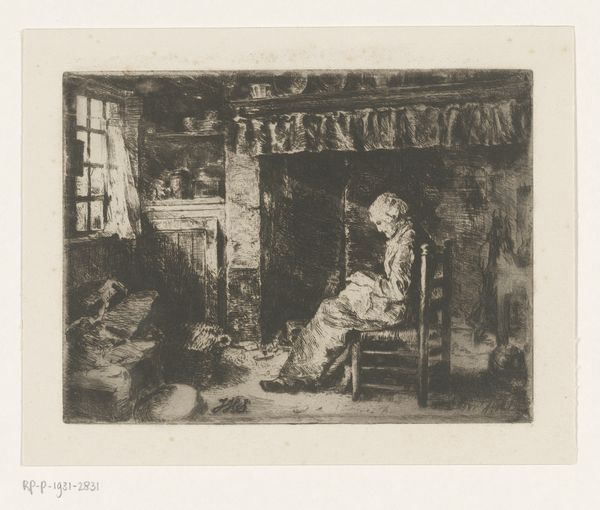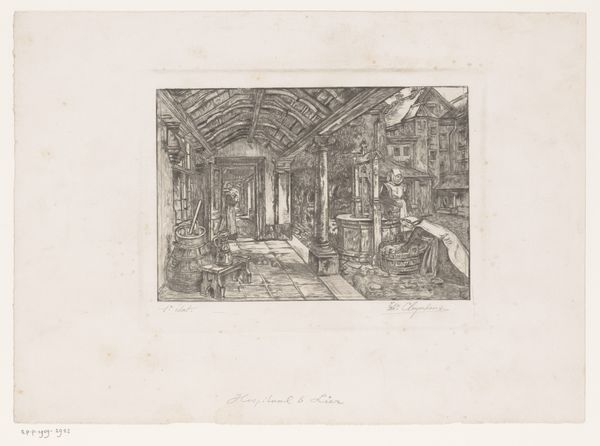
Interieur van een boerenwoning met vrouw bij de haard en een man aan tafel c. 1882
0:00
0:00
print, etching
#
dutch-golden-age
# print
#
etching
#
genre-painting
#
realism
Dimensions: height 238 mm, width 318 mm
Copyright: Rijks Museum: Open Domain
Curator: Looking at Piet Verhaert's etching from around 1882, titled "Interior of a Farmhouse with a Woman by the Hearth and a Man at the Table," one immediately notices its detailed depiction of rural life. Editor: It's so grey! There’s a bleakness, isn't there? The atmosphere is heavy, suggesting the constraints of everyday existence for these figures. Curator: Precisely. Verhaert uses the etching technique to meticulously capture the textures and lighting within the rustic interior. Note how the hearth acts as a central point, radiating symbolic warmth, literally and metaphorically. The woman attends to it. A guardian. Editor: It’s powerful how the image confines the woman near the fireplace while the man sits, seemingly occupied with papers. It really underscores gender roles within agrarian communities of the late 19th century. One wonders who the audience was meant to be: a rural subject unlikely could afford something like this, so urban people exoticizing this domestic sphere? Curator: The cultural memory embedded in domestic scenes like this persists because of these strong symbolic arrangements of figures and objects. The very inclusion of this interior hints at enduring archetypes—the family hearth, the provider—themes rooted deeply in the collective psyche. And, of course, Dutch genre painting was incredibly popular and informed Verhaert’s work. Editor: True, and seeing the work categorized as Realism gives more context; it reminds me to avoid romanticizing it, or idealizing it through a nostalgic lens, and instead focusing on how the work, via technique and subject matter, presents class dynamics during this historical period. The heavy lines, that greyscale palette we mentioned—it all conveys labor, restriction. It seems very bleak in our time. Curator: In exploring the layers of this scene, perhaps we find some solace in our modern domestic freedom and remember the emotional and cultural importance we have, inherited through generations, in images. Editor: Absolutely, confronting and understanding these historical frameworks helps us navigate the evolving dialogue between gender, class, and representation, pushing for more equitable artistic and social spaces today.
Comments
No comments
Be the first to comment and join the conversation on the ultimate creative platform.
